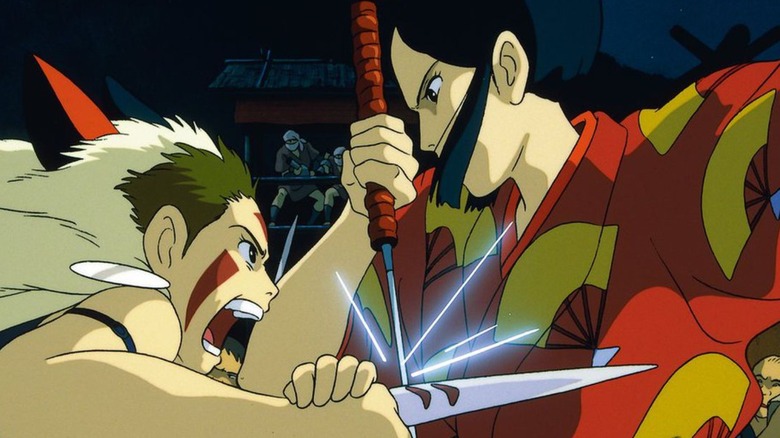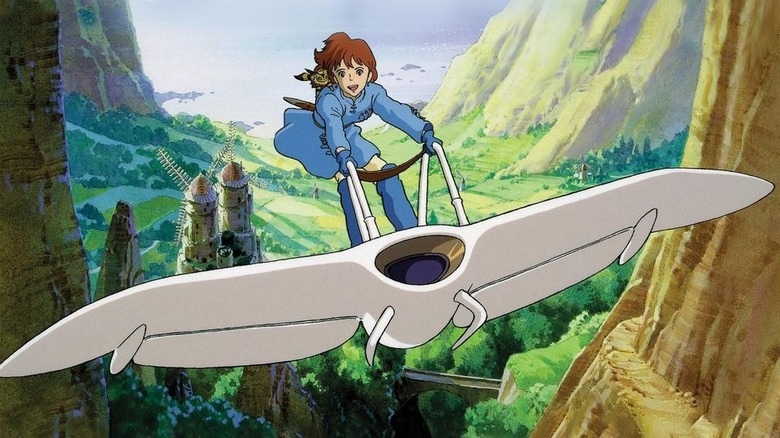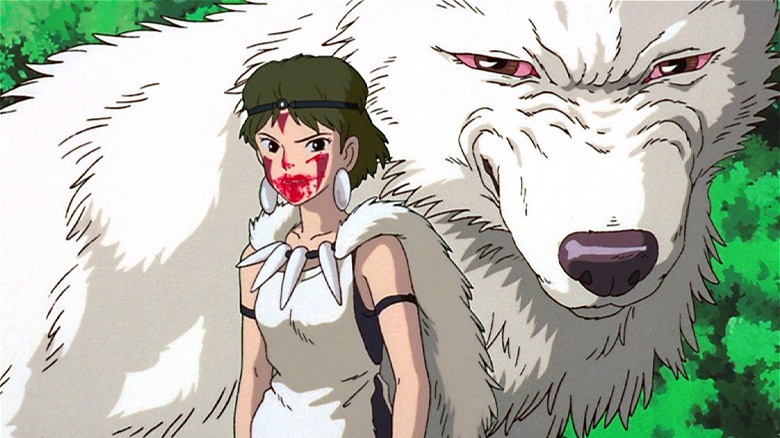The Reason Studio Ghibli Has A Strict 'No Edits' Policy
We may receive a commission on purchases made from links.
Studio Ghibli is one of the most beloved names in animation and cinema at large, the Japanese company's intimately emotional films attracting a massive worldwide audience. Co-founder and director Hayao Miyazaki, a name synonymous with Ghibli, is known for his strong creative vision and genuine approach to his themes. As a result, Ghibli films have a notably refreshing absence of corporate studio interference, their authenticity stemming from Miyazaki's "no edits" policy during international distribution.
Even though Studio Ghibli is now a household name, it took over 10 years since its birth in 1985 before Miyazaki was able to confidently agree to release his films to the global market through Disney's Buena Vista International. Under that deal in 1996, Ghibli films found a booming fanbase outside of Japan, no doubt due to Miyazaki's insistence on retaining almost all artistic elements as presented in their original form. Even then, Miyazaki and the Studio Ghibli heads fought their battles to ensure quality control.
Warriors of the Wind: The Nausicaa disaster
"Nausicaa of the Valley of the Wind," Miyazaki's second feature film, wasn't technically a Studio Ghibli product at its birth, and subsequently was subject to foreign studio interference without the watchful eye of its creator. The film was produced by animation studio Topcraft, the Japanese arm of American production company Rankin/Bass, but its smashing success helped Miyazaki found his own Studio Ghibli in 1985 alongside director Isao Takahata and producer Toshio Suzuki. However, the sloppy handling of the international distribution of "Nausicaa" built up Miyazaki's distrust in overseas producers.
New World Pictures, Roger Corman's now-defunct production company, dubbed and edited "Nausicaa" for its United States release under the title "Warriors of the Wind." This version cut out about 22 minutes of footage and purposefully mistranslated dialogue, turning the morally complex environmentalist parable into a typical '80s action cartoon. New World also couldn't imagine selling an animated feature with a female protagonist, so the company put a group of macho men on the cover of the VHS, none of whom appear in the movie. Princess Nausicaa, who appears in the background as a blonde woman, was also renamed Princess Zandra for the film. Miyazaki was understandably upset at the changes and vowed to have full creative control over Ghibli's future international releases.
Mononoke Hime: The Weinstein incident
Walt Disney Studios' relationship with Studio Ghibli has mostly been fruitful, and the former has respected Miyazaki's demands in international distribution. There was one infamous incident, however, that has gone down in Hollywood legend. Miramax, which was owned by Disney at the time, was producing the U.S. release of "Princess Mononoke," bound to the same creative agreement that Miyazaki had established in the deal. However, infamous studio meddler (and, of course, now-convicted rapist) Harvey Weinstein wanted to cut the film down from 133 minutes to 90, breaking the promise Disney had made to Miyazaki.
Originally, the rumor was that Miyazaki sent Weinstein a katana with the words "no cuts" written (or attached, it's unclear) on the blade as a response. Since then, Miyazaki stated in a 2005 interview with The Guardian that it was actually Ghibli producer Toshio Suzuki that sent the sword, though the animator confidently declared, "I defeated him." More recently, Steve Alpert, who was an executive for Ghibli's international division, explained the story further in his memoir "Sharing a House with the Never-Ending Man: 15 Years at Studio Ghibli," published in English in 2020. According to Alpert (and cited by Kotaku), Suzuki bought the katana at a store that sold replica props for samurai films, and recounts the story in dramatic fashion:
"Suzuki presented the sword to Harvey in a conference room full of horrified Miramax employees. One of them later approached me and said, 'You gave Harvey a SWORD? Are you CRAZY?'
When Suzuki presented Harvey with the sword, Suzuki shouted in English and in a loud voice, 'Mononoke Hime, NO CUT!' "
Weinstein was reportedly furious and threatened Alpert's career, but the potentially disastrous event turned into a Studio Ghibli success story. True to the demands of Miyazaki and Suzuki, "Princess Mononoke" suffered no cuts.


